This is an excerpt from the newly published Craft Beer Branding Guide. CODO Design has spent years working with startup craft breweries on naming, branding and positioning, responsive web design, and package design, and have gathered their experience into a comprehensive guide to help startup breweries navigate the entire branding process. Check it out and learn how to make your brewery stand out.
“Why do we, in a world of Facebook, Instagram, Untappd and Twitter, need a website? Can’t we just use social media to reach people?” We’ve heard this question several times over the last few years from different breweries in planning.
Let’s back up a minute.
Social media is an indispensable marketing tool, but it’s just that, a tool. It provides a channel to directly market your brewery to a specific audience and plays a key role in your brand strategy and marketing plan. So the short answer to this question is yes, you need a website. Your site is one of the most important pieces of owned media you have and gives you an opportunity to intimately tell your story without competing with banner ads, game invites, and other people’s content.
“Ok, we need a website. But what kind of info should we put on it?”
Before diving into this, let’s assume you’ve got rock solid brand foundation. You understand you origin story and differentiator, your why and what role you play in your community. You’ve got a killer identity and are now turning your attention to your digital presence. Your website, and specifically, the role it plays in your marketing is all part of a larger communication strategy. The amount and type of content you include is directly related to your goals for the site.
Here’re a few examples you may see out in the wild. These are all driven by the overall brewery concept (example, a brewery that is big on taproom events could benefit from a calendar, while a small brewpub may not have that need.) These are by no means off-the-shelf solutions, but they should give you a good idea of how your website can become a relevant part of your marketing plan.
1. Lean, brand-forward microsite/splash page
This can be as simple as a logo, a short ‘about’ blurb, and contact info/social media links. This is often used as a temporary placeholder while a more robust website is built out, though some breweries can get away with using something like this for a few years, provided they actively use social media and engage with their audience properly.
A benefit of going this route is that it can be done relatively cheaply and quickly. But as with anything that’s cheap and fast, it won’t have the same immersive impact that a more robust site could.
EXAMPLE: We built a super simple splash page for our friends at Ballad Brewing (Danville, Va.). It’s been up for a few months and will be replaced soon when we launch their larger, more immersive website. In addition to carrying their branding, it links to their social media channels and blog. Check it out here.
2. Blog as a startup journal
I love when we work with breweries who want to document their start up journey, worts and all. That’s what makes craft beer so compelling — it’s a direct connection to an industrial practice, where you can watch people work hard to create something tangible and beautiful. This transparency is powerful when considering macro breweries putting more money toward advertising than making great beer.
By sharing photos and writing about where you are in the process, we’ve seen breweries build enormous buzz before they even poured concrete or installed tanks.
Ideally, this blog would live on a larger website, though in a pinch, you can start a standalone blog to capture your progress using something like Tumblr, WordPress or Medium.
If we had to choose between a simple blog and a lean, brand forward microsite (as consumers), we’d take the blog. All day. Or even better, a combination of the two. Or better yet, option 3, below.
3. Robust, immersive website
This would be the most feature-rich option of the three. Not bloated and full of whiz-bang functionality for the sake of having it, but this would be a big, fully-fleshed out website with multiple pages devoted to different elements of your business—like a page on your brewers, photo galleries, an events calendar, beer finder, keg availability, a blog, full social integration, and anything else you can dream up.
This site would serve as a digital home base for all your communications. The larger you become (or hope to become), the more necessary something like this is. If you’re distributing regionally, for example, your website can be a great way of giving people an experience who may not be able to visit your brewery itself.
EXAMPLE: We built a website for Wooden Bear Brewing (Greenwood, Indiana) that focuses on a rotating tap list and events calendar. We also included a customized google map and an easy to read food menu. Check it out here.
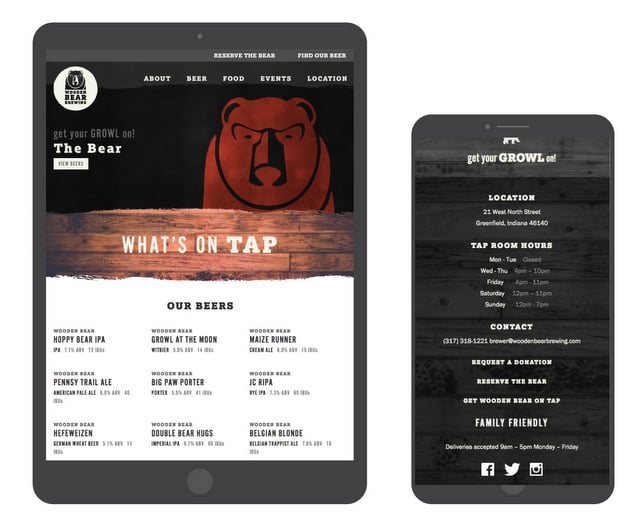
A few more things to consider
- Responsive web design means that your site automatically formats to fit whatever screen size someone is using. This means you get the same content on a desktop as you do on a tablet or smart phone, all in a pleasant, easy to use experience. No matter which direction you decide to go, you have got to have a responsive website. Even a lean microsite needs to work properly on smaller screen sizes.
- We’ve written about templates before. While they can be cheap and easy to get in place, there’s nothing stopping a brewery across the street from using the exact same one. Through branding, your goal should be complete differentiation. This extends to a bespoke website that works to tell your story in a completely unique way.
- Like making sure your website is responsive, building it on a Content Management System (CMS) is pretty much par for the course today. Gone are the days of needing to know HTML yourself, or needing to pay someone to update your website. A CMS allows you to fully edit your site without needing to know anything about coding. We’re big advocates of WordPress, though there could be another great fit for you depending on your goals and needs.
If you’re curious about your own brewery’s website, or branding, package design or naming — reach out to us (info below). We’d love to talk.
This column was provided by the folks at CODO Design, a five-man branding firm based in Indianapolis, Ind. They’ve spent years working with startup craft breweries on naming, branding and positioning, responsive web design, and package design. They’ve gathered their experience into a comprehensive Craft Beer Branding Guide to help startup breweries navigate the entire branding process. Check it out at www.craftbeerbrandingguide.com.

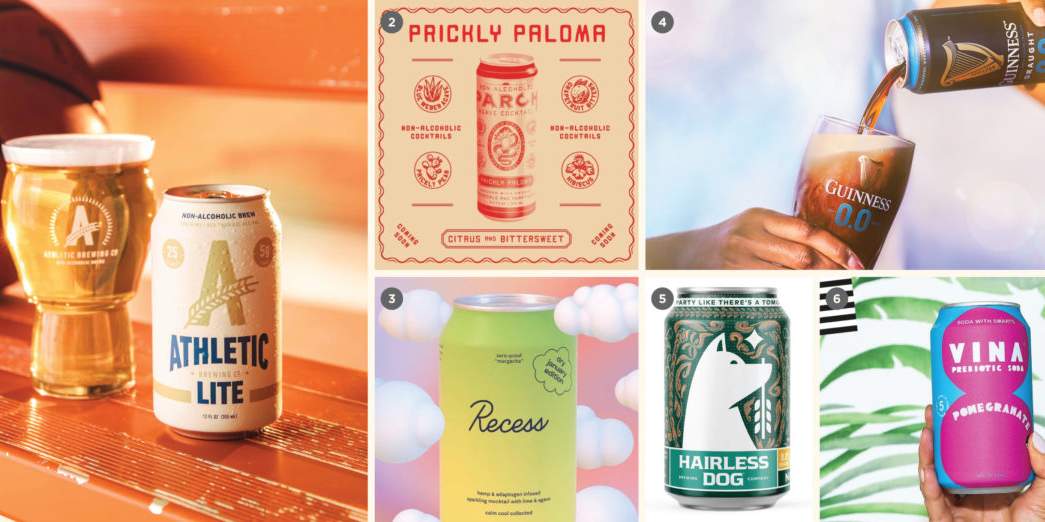
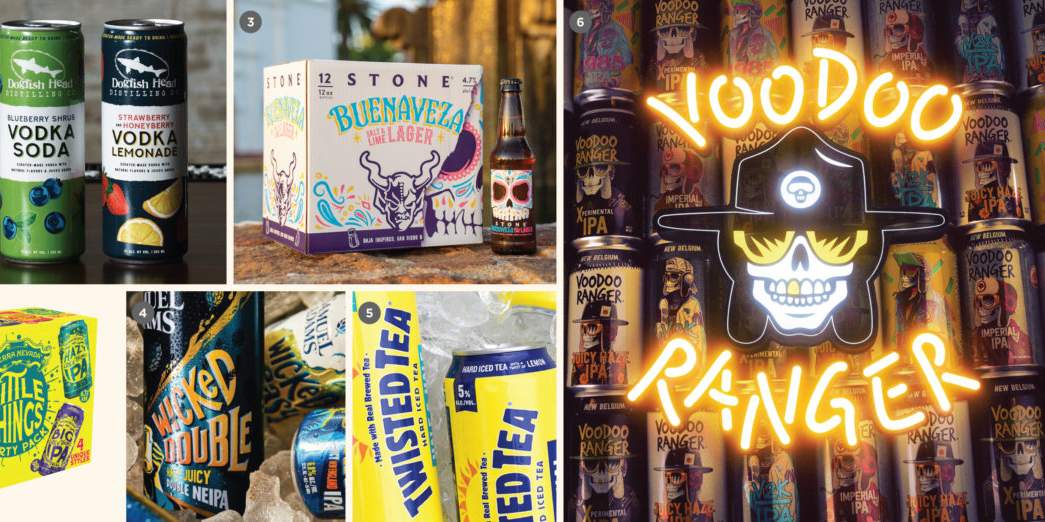
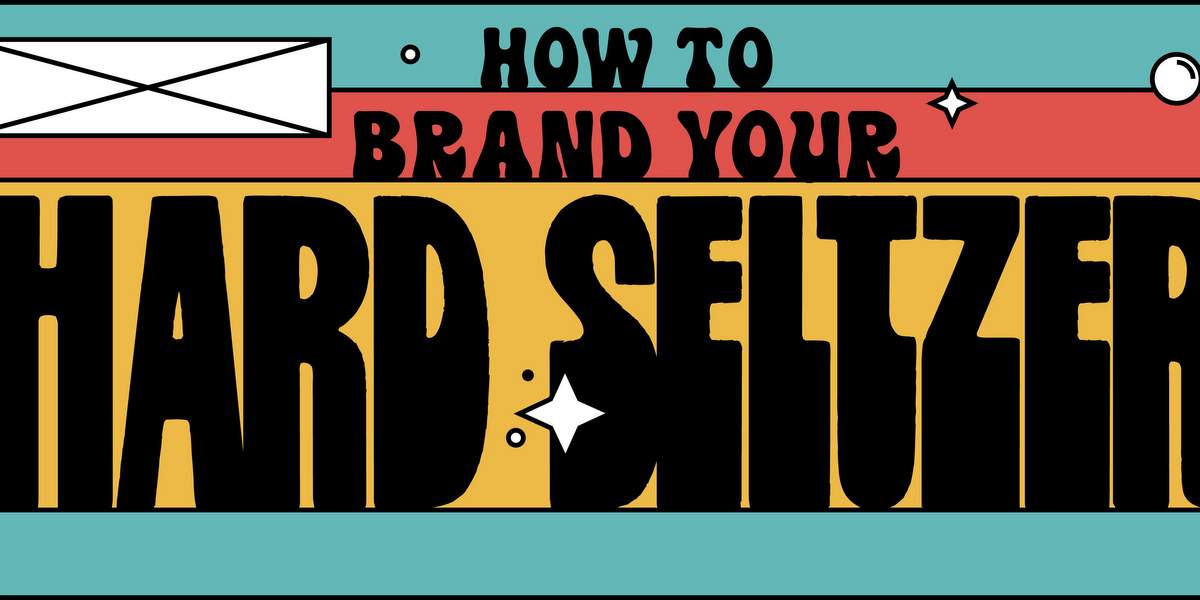
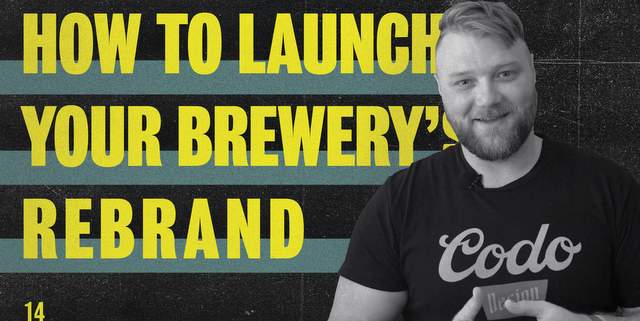
[…] Source: Does my brewery need a website? […]